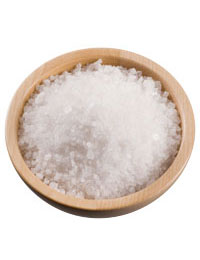
Like many people, I am a lover of savoury, salty flavours.
Salt, of course, enhances and brightens flavours in cooking, one of the reasons why it’s beloved of chefs. Salt also performs an important role in preserving food.
Our love of salt, though, has (without being too dramatic about it) the potential to kill us. Too much salt (or sodium) in the diet can lead to high blood pressure which increases the risk of stroke. A high salt intake is a risk factor for heart disease, kidney disease and stomach cancer.
It’s probably not news that most of us eat more salt than recommended. Young people and men are the worst off, with men aged 19-44 having mean intakes almost double the recommended upper level for adults. It’s true we need salt to stay healthy. But the amount of salt we actually need in a day is not very much at all – the recommended upper limit is 2300mg of sodium, or 6g of salt (sodium chloride) a day. That’s about one teaspoonful of salt from all food sources. Our average as a nation is around 9g!
According to the Stroke Foundation, the benefits of even a modest reduction in salt intake are large. Globally, they say, a reduction in salt intake to 6g a day would lead to a 24 per cent reduction in stroke deaths and an 18 per cent reduction in coronary heart disease.
So how can we get less salt? Although it helps, it’s not as simple as just holding off with the salt shaker. Most of the sodium we get is not from salt we add to food, but actually ‘hidden’ salt in processed foods we eat. And before you congratulate yourself for not eating junk food or salty snacks, it may be a surprise to know that a quarter of our daily salt comes from a food we don’t tend to think of as salty: bread. Other big contributors are processed meats (salami, bacon, sausages), smoked foods, Marmite, foods canned in brine and fast food. Tomato sauces, dressings, soy sauce, marinades, chips and instant noodles are also high in sodium. Some other unlikely hiding places for salt include breakfast cereals, cheese, baked beans and crackers.
So an important step is increasing the fresh food we eat. Fruit, vegetables, meat, fish, unsalted nuts, milk etc are naturally low in salt and packed with nutrients.
Second, do some label reading when shopping. Look at the ‘per 100g’ column on labels, compare brands, and go for the lower sodium product where you can. Low salt foods are those with less than 120mg of sodium per 100g. High salt foods have more than 600mg/100g.
Although you may have read that ‘gourmet’ salts such as flaky, sea salt or Himalayan salt have less sodium than regular salt, this is not true. Salt is salt; the Stroke Foundation advises it’s all made up of about 97% sodium chloride and contains exactly the same amount of sodium.
Check for more on ‘gourmet’ salts and some great tips on boosting the flavour of your dishes without adding salt.
Talk to us – is salt something you consciously look out for when you’re buying food? Do you read labels specifically for salt? Comment below!
www.healthyfood.com










